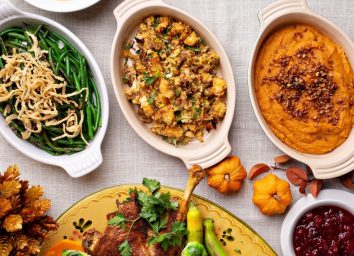15 Healthiest Holiday Food Swaps
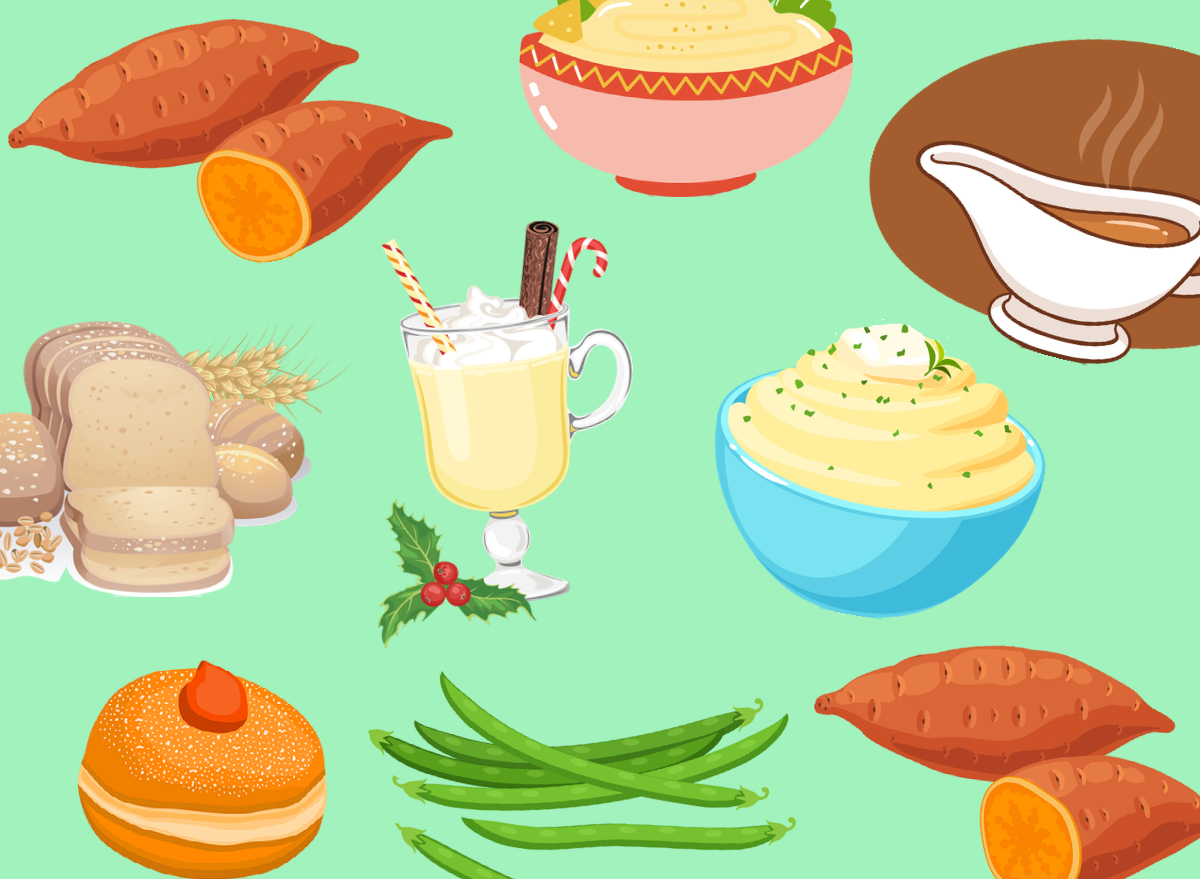
The holiday season—from Thanksgiving to Hanukkah to Christmas to New Year’s Day—is often thought of as the most magical time of the year, with so much to celebrate. But this time of year can also be stressful for many reasons, especially for those who are still trying to build a healthy relationship with food. Weight fluctuation is normal, especially during the holidays when many people gain an average of one pound. But the impact of spending weeks ignoring what your body truly craves and needs, as well as overriding hunger and fullness cues can do damage for months after the decorations are packed away.
While an important part of having a healthy, mindful approach toward eating includes allowing yourself to enjoy your favorite foods, it’s also important to make sure you are still meeting your nutritional needs. With this in mind, there are many simple healthy holiday food swaps you can make. This way, you can enjoy delicious food while also getting plenty of vitamins, minerals, protein, fiber, and healthy carbs and fats. Sound too good to be true? Here are some ways to make the season healthier and happier with these healthy holiday food swaps. And while you’re at it, try out these 21 Best Healthy Cooking Hacks of All Time.
Shepard’s Pie Instead of Pot Pie
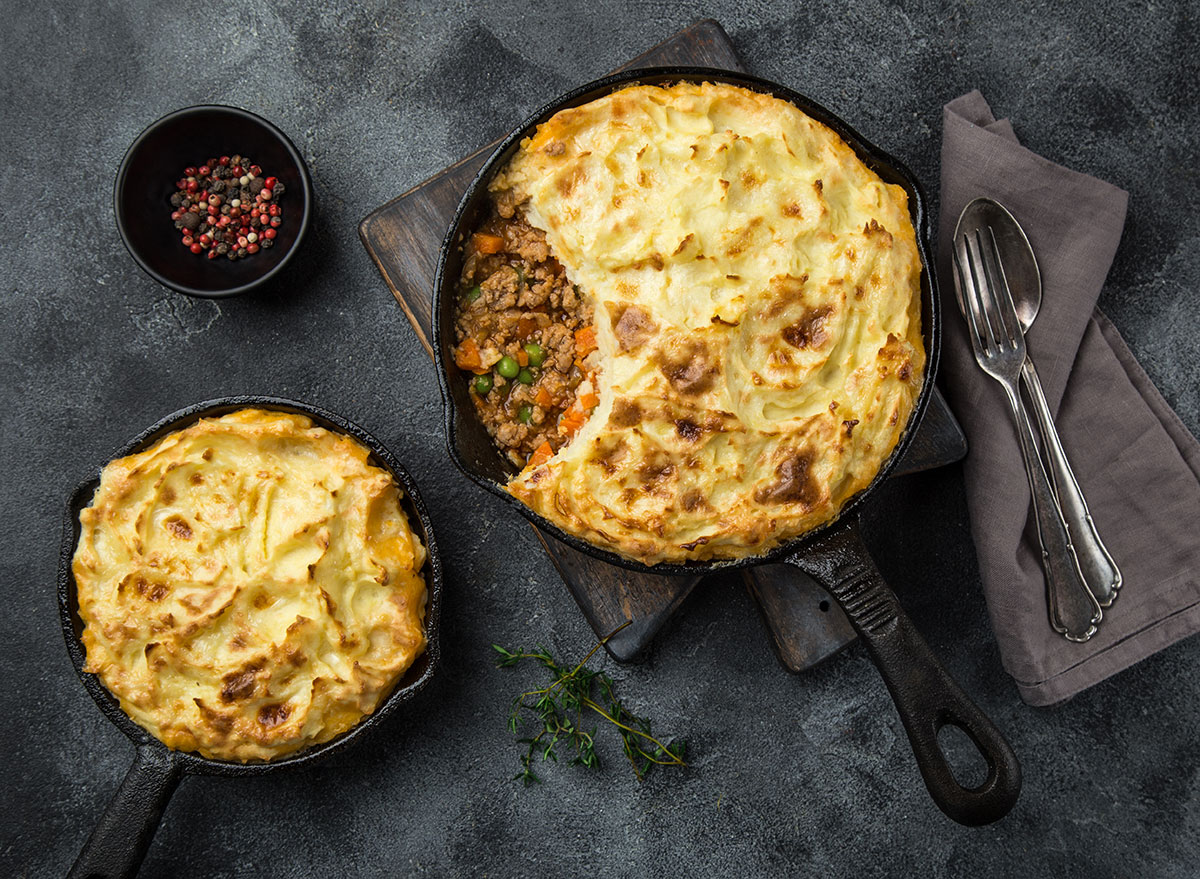
Pot pies are a popular way to use up holiday dinner leftovers or to enjoy one simple entrée for smaller dinners. But this dish can be high in fat and sodium. You can still get that savory, comforting taste you crave in a Shepard’s Pie, though. Try swapping the beef for lentils, then layer in your favorite vegetables and top with mashed cauliflower or sweet potatoes for a nutritional boost.
Roasted Sweet Potatoes Instead of Sweet Potato Casserole
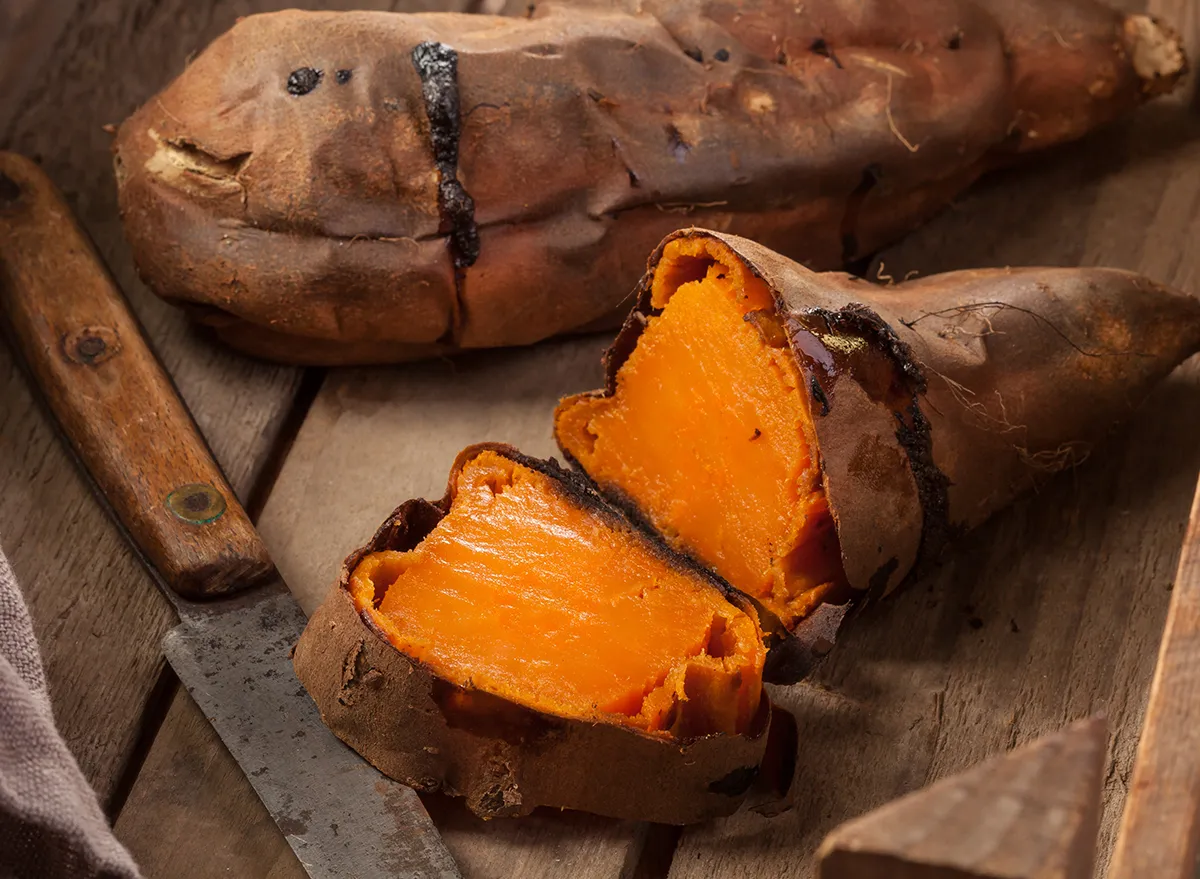
Sweet potato casserole is loaded with added sugars, from the brown sugar the potatoes are tossed in all the way to the coating of either candied pecans or toasted marshmallows. You can still enjoy the essential flavors of this dish by roasting sweet potatoes and seasoning them with warming spices like cinnamon and even adding a drizzle of real maple syrup. This way, you’ll get that sweet flavor with less sugar and all the benefits of sweet potatoes: beta-carotene, vitamin C, fiber, and potassium.
Fresh Green Beans Instead of Green Bean Casserole
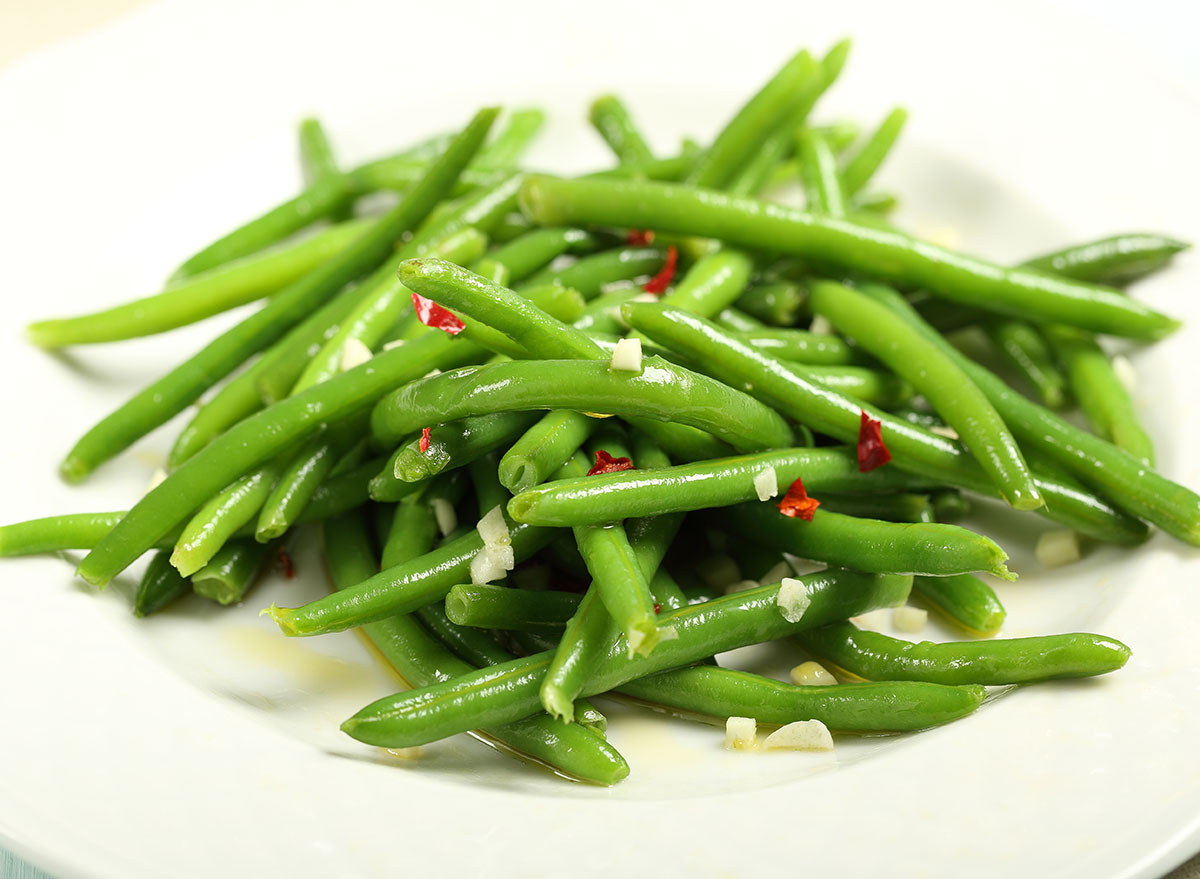
Green bean casserole isn’t for everyone, so if your family doesn’t love this dish, it’s easy to swap it for fresh green beans. You can add a little crunch (as well as protein and healthy fats) by tossing in toasted nuts, or enjoy them dressed with just salt, pepper, and garlic. Besides, green bean casserole is a much less nutritional dish, because it is typically prepared with cream of mushroom soup and topped with fried onions. That makes each portion full of sodium, which can leave you feeling bloated or with a headache shortly after eating.
Half Mashed Cauliflower/Half Mashed Potatoes
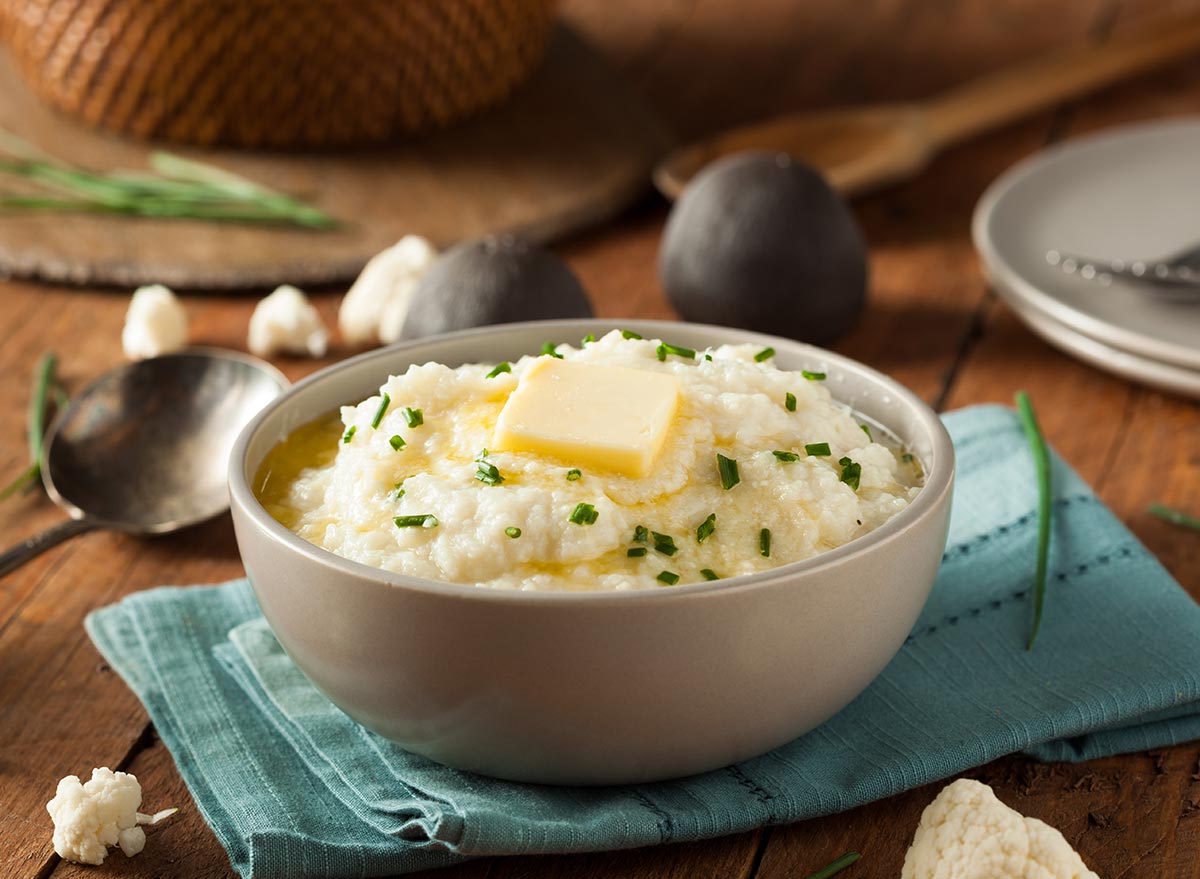
No one wants to give up mashed potatoes for the holidays, but you can add a nutritious punch by swapping out some of this beloved starchy vegetable for some cauliflower. You won’t notice much of a difference in taste, but you’ll get plenty of benefits from making this adjustment, as cauliflower is high in vitamin C and serves as a good source of folate, too.
Almond or Soy Eggnog Alternatives
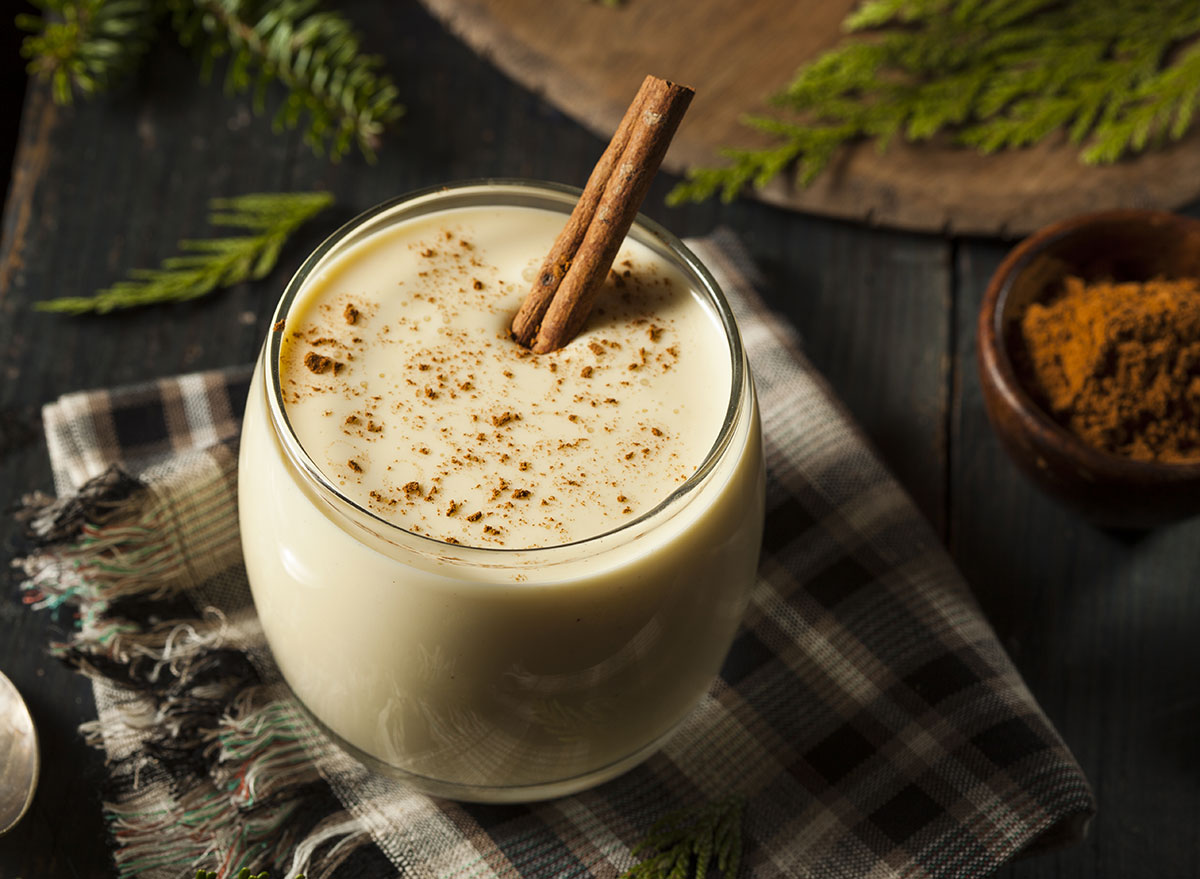
If you love eggnog, there’s no reason to deprive yourself of this tasty treat during the holidays. But instead of drinking the traditional version, try a non-dairy alternative. A standard carton of eggnog at the grocery store has is packed with calories and is high in fat, saturated fat, and sugar. But non-dairy options are surprisingly lighter, with less than 100 calories per serving, typically less than 10 grams of sugar, no cholesterol, and no saturated fat. And—dare we say—the dairy-free options are even more delicious!
Looking for more healthy options? Sign up for our newsletter to get daily recipes and food news in your inbox!
Baked Sufganiyot
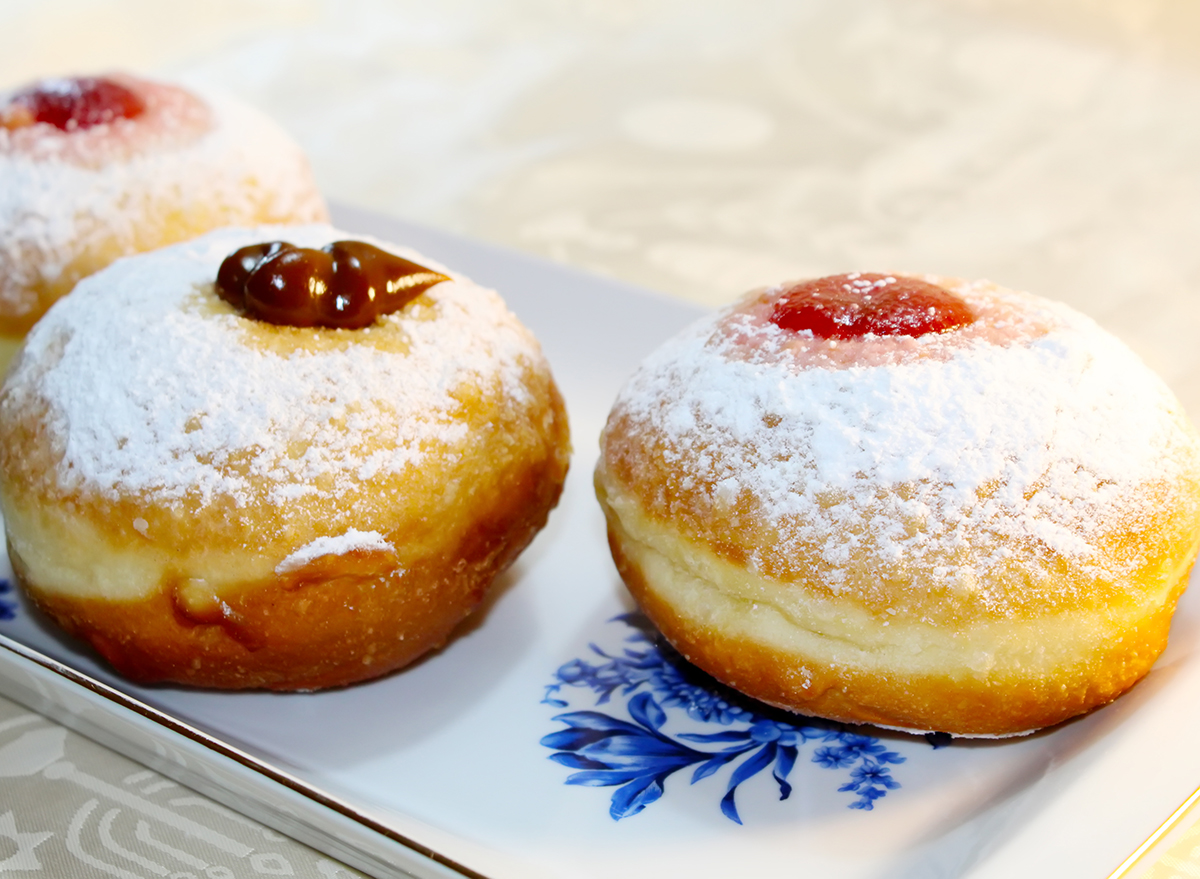
Who can resist sufganiyot? These pillowy, jelly-filled donuts are enough to make your mouth water just thinking of them. But if you are focusing on your health this holiday season, a deep-fried dessert is probably not on the menu. Although deep frying sufganiyot in oil is tradition, as oil plays an important role in Hanukkah celebrations, you can still enjoy a lighter version of this recipe by baking the donuts. Pay homage to the oil that lasted eight days through other dishes on the table.
Oil, Sugar, and Flour Swaps for Baked Goods
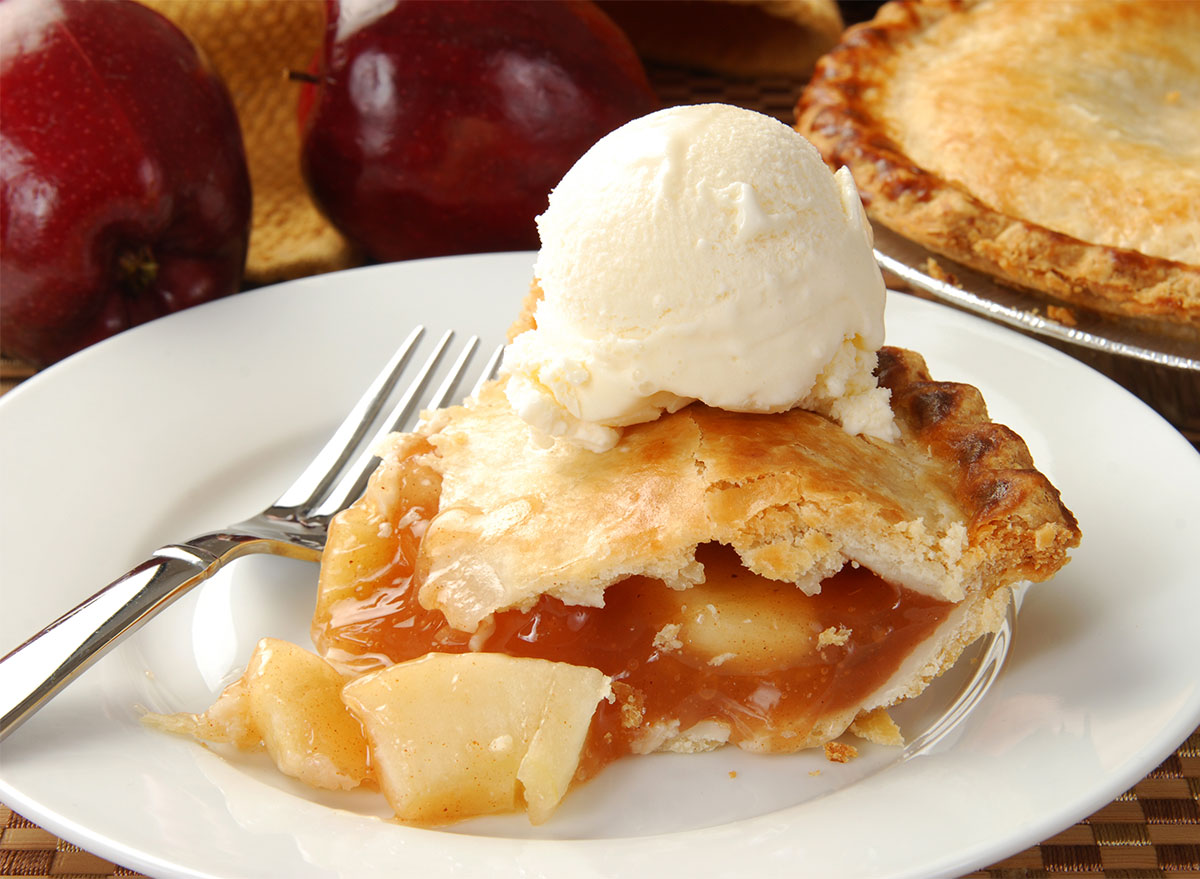
‘Tis the season for baked goods, but days on end of consuming so much sugar will surely leave you feeling unbalanced. Luckily, there are many ways to healthify these sweet treats, and that’s by swapping the sugar, oil, and even flour for more nutritious options. They won’t ruin the flavor or texture of your favorites either! The Academy of Nutrition and Dietetics offers many ideas, including fruit purees like bananas or applesauce in place of butter and oil, swapping bleached all-purpose flour for whole-wheat flour or gluten-free flour alternatives, and reducing the amount of sugar. When you choose to swap in fruit purees, the recipe will naturally need less sugar thanks to the natural sugars in fruit!
Baked Vegetable Latkes With Greek Yogurt
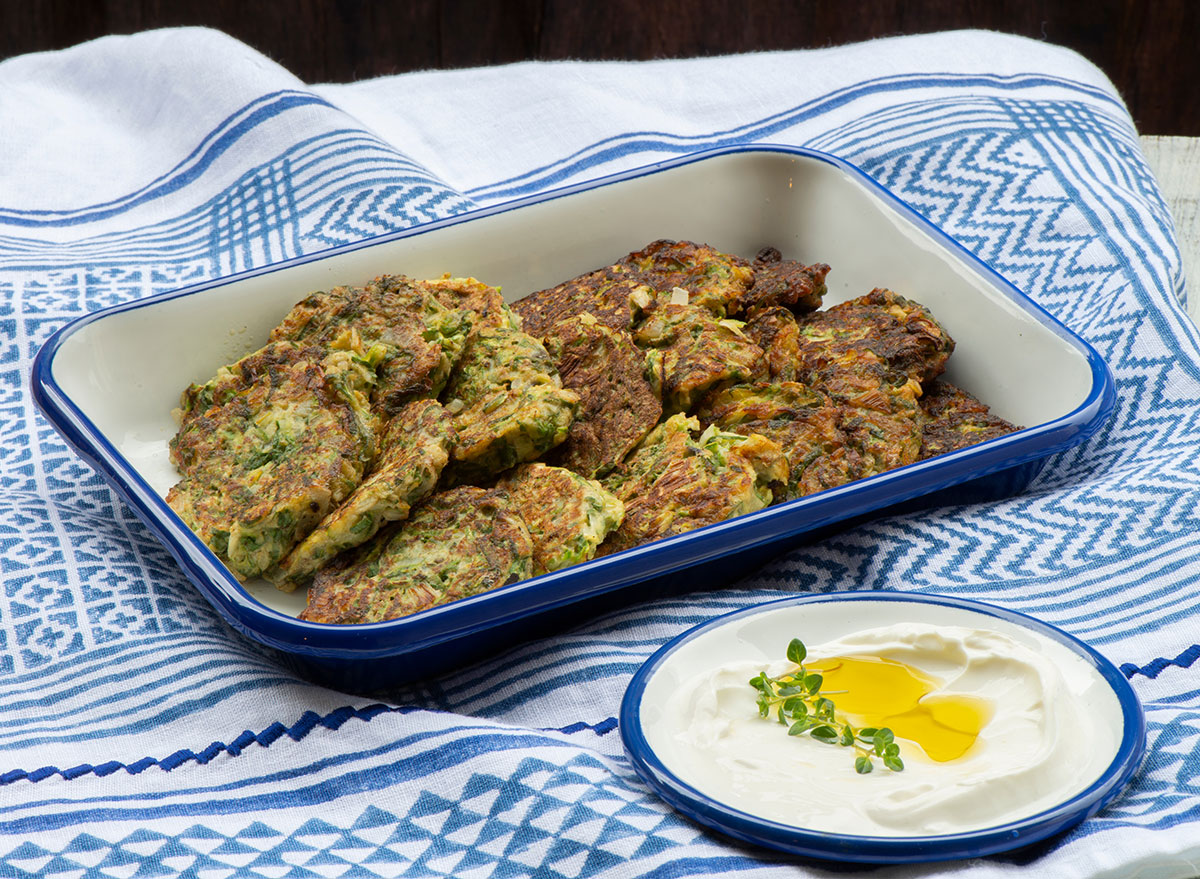
It’s just not Hanukkah without the latkes. While fried potato pancakes aren’t exactly the poster child for health, they can still be just as delicious and more nutritious with a few simple changes. You can try baking the latkes rather than frying them, sneaking in more veggies like shredded zucchini and carrots with the potatoes, and serving them with a side of homemade applesauce and Greek yogurt in place of sour cream.
If you do decide to fry the latkes, Douglas Twenefour, senior clinical advisor at Diabetes U.K., advises, “Traditional Hanukkah foods are all about oil, but if you have to use oil in cooking remember that not all fats are the same. It is preferable to use unsaturated fats like olive, rapeseed, or sunflower oil than products with more saturated fat like butter, ghee, and lard.”
Choose Red Wine for Sipping

Many people are found with a drink in hand as part of the holiday celebrations. If you want to completely nix the alcohol, try a sparkling water mocktail or kombucha; otherwise, opt for red wine. Of course, too many glasses spell trouble, but the antioxidants in red wine may help raise HDL (“good”) cholesterol levels and even reduce blood clot formations.
Baked Apples Over Apple Pie
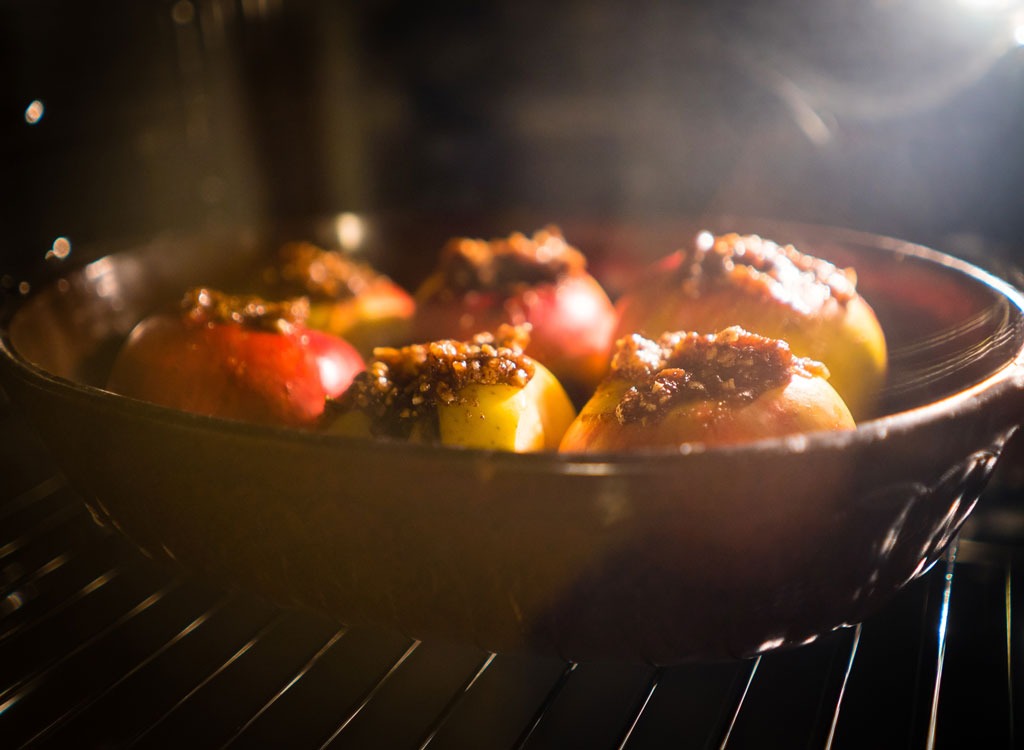
Apple pie is a fixture at the dessert table, but you can reduce some of the calories, fats, and carbs associated with this dessert and still savor that sweet, warm apple-cinnamon flavor. And that’s by making baked apples instead of making a whole pie.
Spiralized Veggies or Spaghetti Squash In Place of Noodles
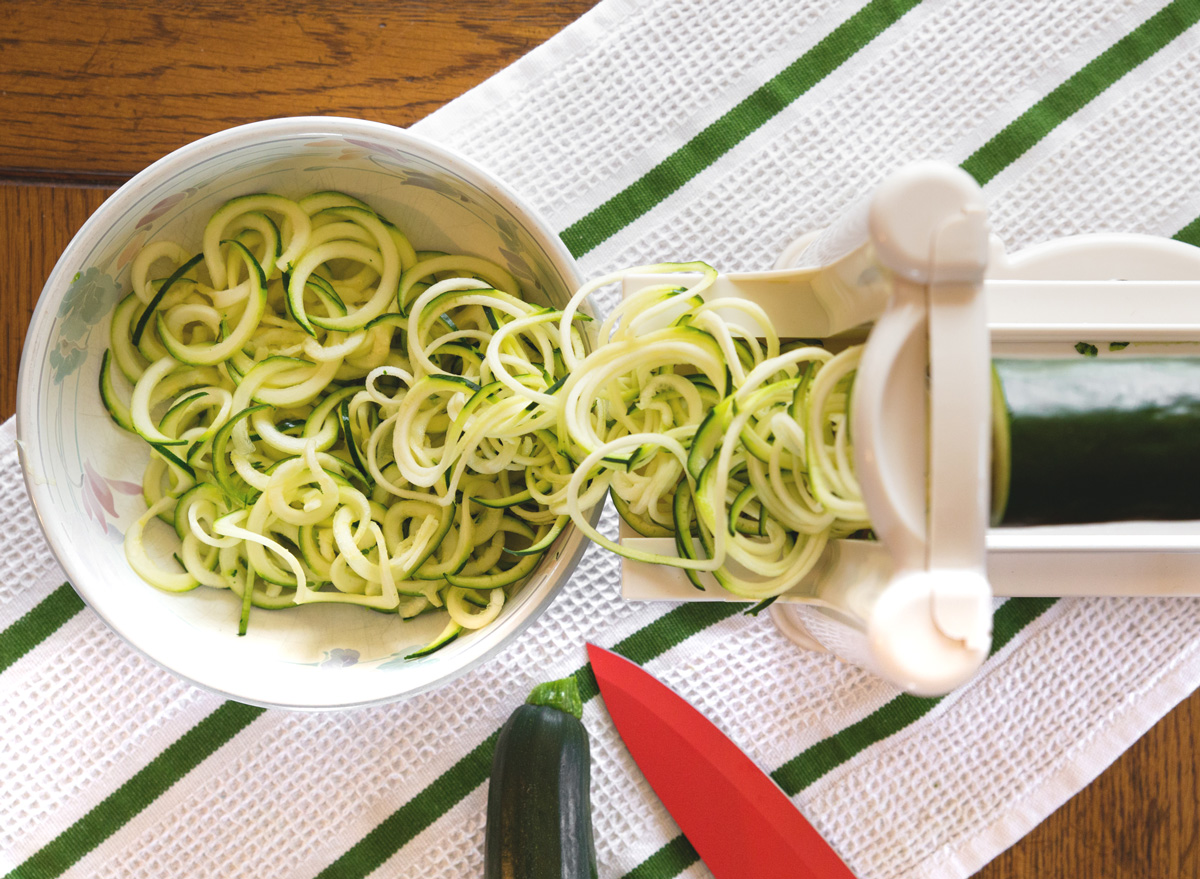
Whether its macaroni and cheese, noodle kugel, homemade chicken and noodles, or any other pasta dish you can think of, it’s possible to swap some or all of the noodles for spiralized veggies or spaghetti squash. This is an easy swap if you want more nutrients or are following a low-carb or gluten-free diet.
Hummus Instead of Cheese Balls
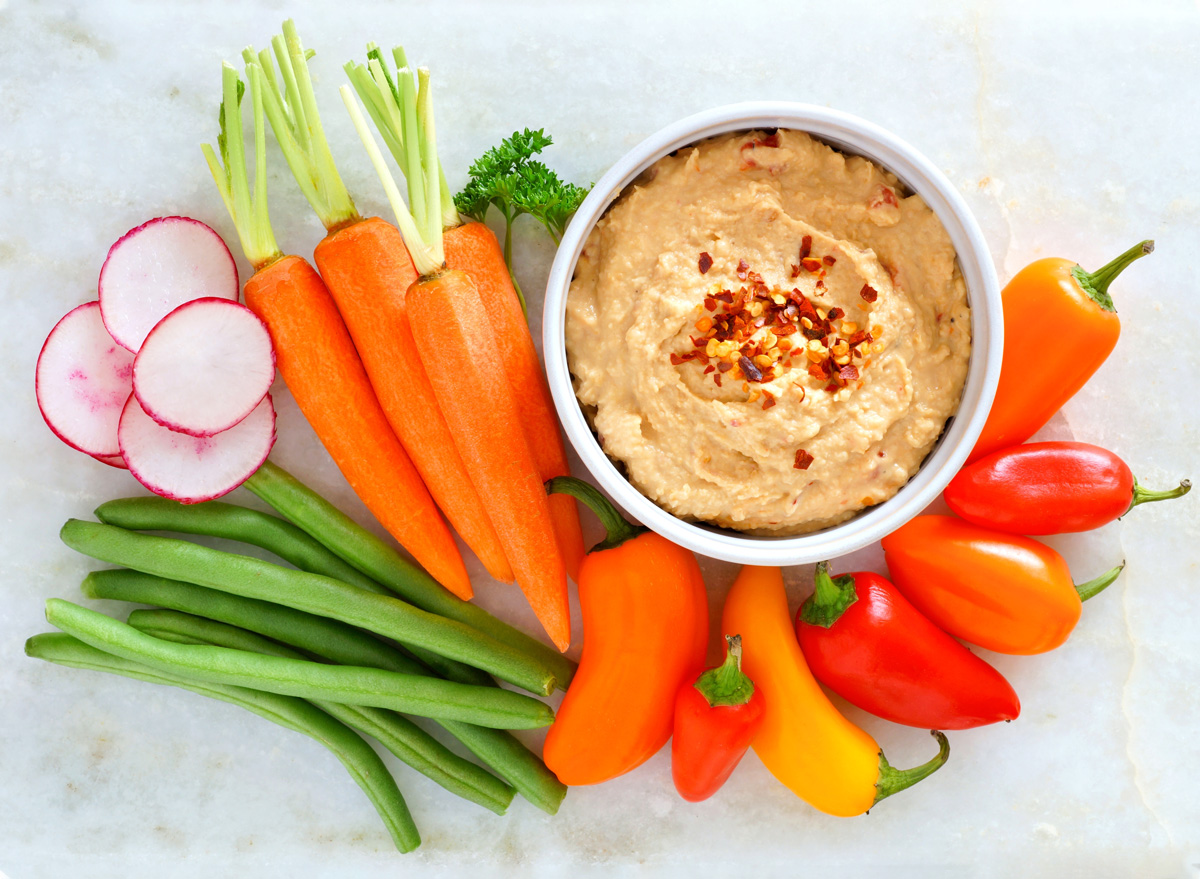
If cheese balls and crackers are a typical appetizer at your holiday dinner table, why not try mixing it up this year with hummus, pita, and fresh veggies? Cheese balls are often made with cream cheese and processed meat, meaning they have a lot of fat and sodium. But hummus, especially homemade, is low in sodium and high in protein, healthy fats, and fiber—plus, it tastes great.
Whole Grains and Oil Over Bread and Butter
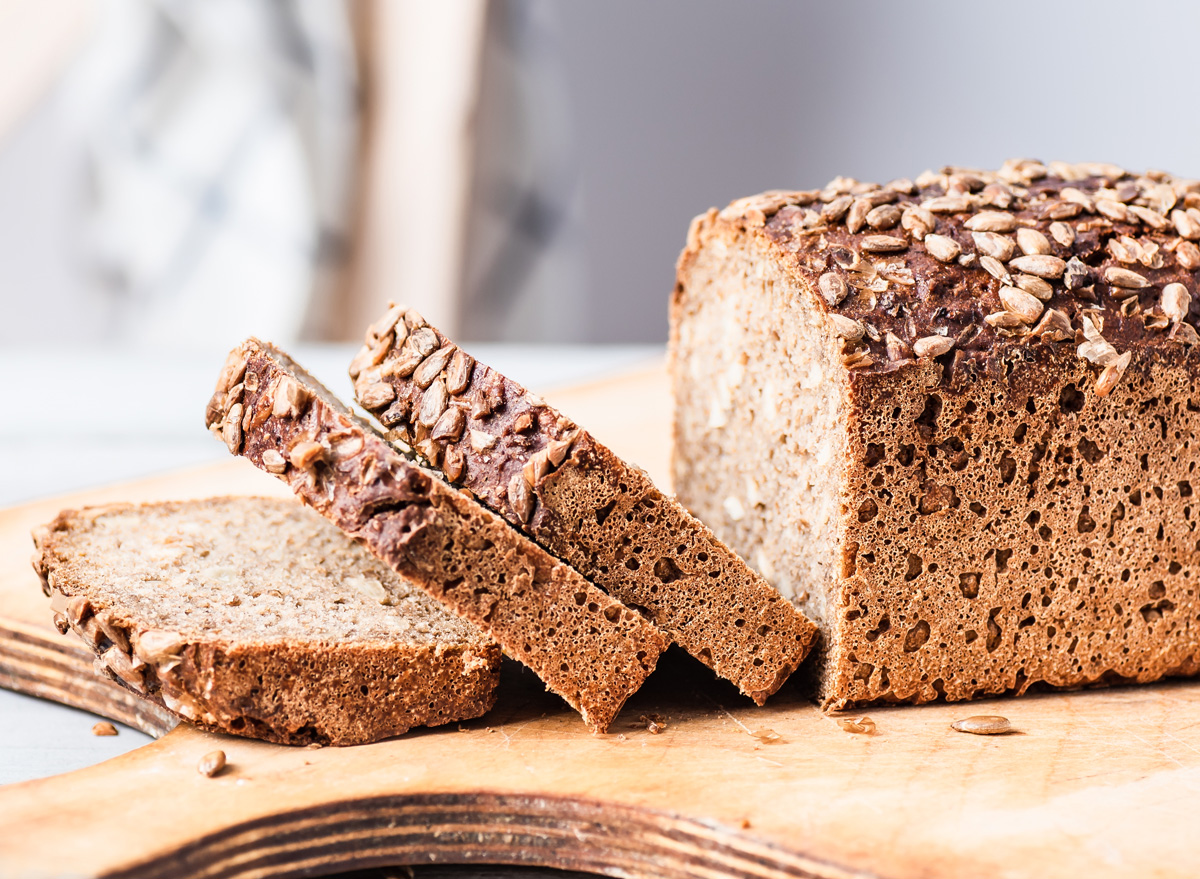
Everyone tends to reach for the rolls at the start of dinner, but swapping those bleached white bread appetizers for whole-grain options will offer many more health benefits. When you also switch butter for dipping oil (with a little balsamic vinegar for extra flavor), it becomes even healthier and feels more elegant. Whole-grain breads are actually great sources of fiber, protein, and B vitamins and can help reduce the risk of stroke, diabetes, and heart disease.
Low-Fat Gravy
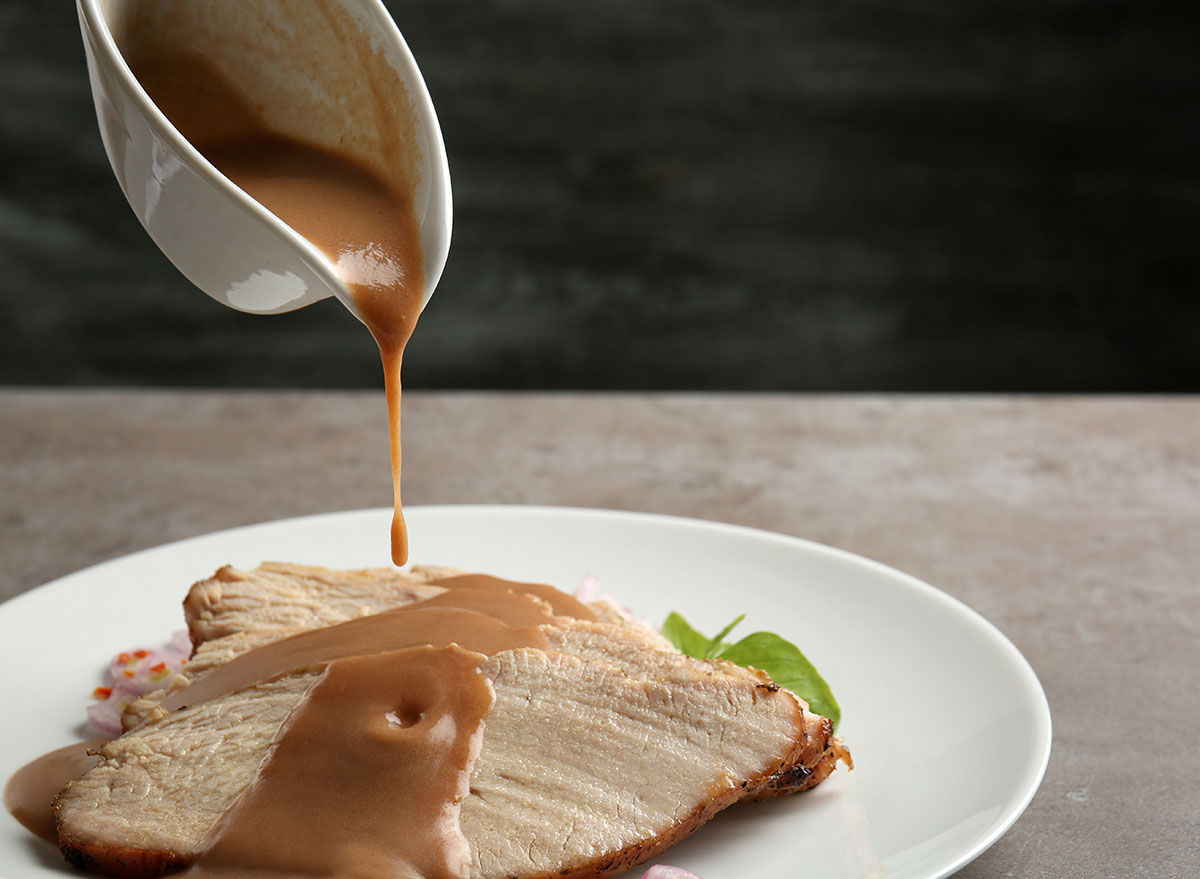
Gravy is easy to lighten up by choosing fresh ingredients rather than jarred options at the grocery store, which are packed with sodium and preservatives. Instead, amp up the flavor and the nutrients by using drippings from the meat you’ve cooked up, or choosing a low-sodium broth along with fresh herbs, low-fat milk, and a little bit of cornstarch.
Healthified Macaroni and Cheese
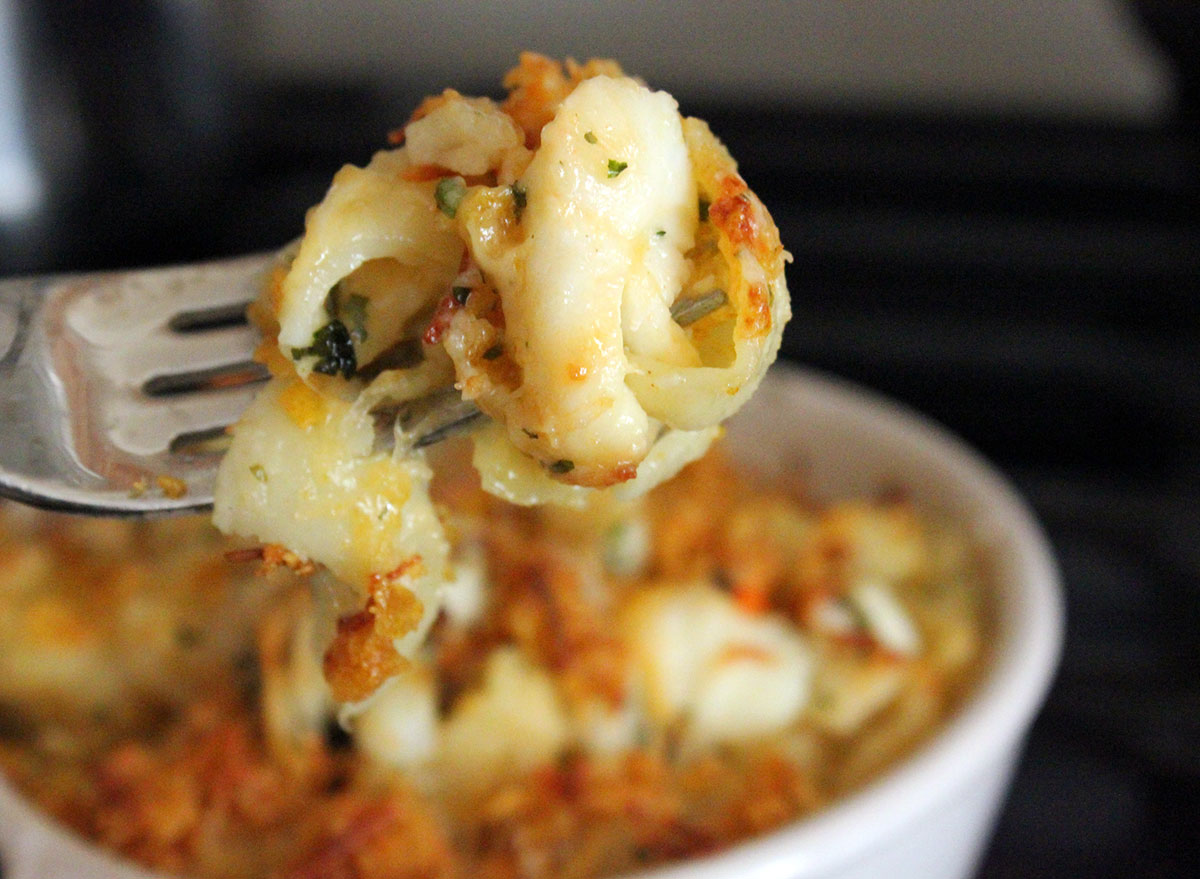
It’s no secret that mac and cheese is a favorite dish on many holiday menus. Part of its charm is that and it’s surprisingly versatile. There are so many ways to make a healthier macaroni and cheese. You can swap regular noodles for a grain-free option like chickpea or lentil noodles. And you’ll want to choose a cheese with robust flavor, which means you can use less of it to reduce fat in this dish. Another idea? Swap milk or heavy cream with a little Greek yogurt for more protein. You can even sneak in veggies by pureeing butternut squash, sweet potatoes, or carrots to add to the cheese sauce.

